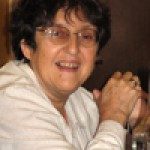Link to Pubmed [PMID] – 1782566
C. R. Acad. Sci. III, Sci. Vie 1991;313(13):599-605
The Birdshot choroidoretinopathy (BSCR) is an ocular disease strongly associated with HLA-A29. The HLA-A29 specificity can be split using immunoelectrofocusing in two subtypes A29.1 and A29.2. BSCR susceptibility is exclusively linked to the HLA-A29.2 molecule. The sequence of HLA-A29.2 was established (EMBL X60108 and found to be identical between patients and healthy individuals. A single difference was found (H—-D) 102) in the extra cellular domains between HLA-A29.2 and HLA-A29.1. The HLA-A29 sub-types shares the consensus HLA class I sequence (D102). The mutation exhibited by HLA-A29.1 (H102) is unique to that molecule. The ancestral type is thus HLA-A29.2 that confers the susceptibility to BSCR whereas HLA-A29.1 has arisen from a more recent mutation conferring resistance to BSCR. Another single amino-acid difference between HLA-A29.1 and HLA-A29.2 was found in the intracytoplasmic part of the molecule, HLA-A29.2 exhibiting the HLA-A consensus sequence whereas A29.1 shares with AW33.1 the mutation S—-F321. In addition, the A29 specificity was assigned to L and Q amino-acids at position 62-63, which can interact with peptides into the binding groove. No specific T or B epitope of susceptibility could be considered involving the region of the mutation discriminating HLA-A29.2 from HLA-A29.1. The HLA-A29.1 mutation is unable to interact with the T cell receptor and did not seem to induce significant structural changes in the peptide-binding groove. Conversely, its position suggests that the A29.1 mutation might interfere with the binding of an accessory molecule, the CD8 molecule being the most likely candidate for that role.

